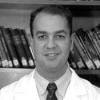Created by healthcare practitioners for
Created by healthcare practitioners for
Patients they Treat
Patients they Treat
Dr. Bert Perey, MD, FRCPC, Orthopedic Surgeon , discusses tennis elbow symptoms and treatment
There are numerous treatment options for tennis elbow. The problem
is not many of them work well, and we really don’t have a solid treatment that can reliably get rid
of the problem in an expeditious way.
Featured Orthopedic Topics
Local Orthopedic Surgeons
Dr. Jordan Leith, MD, MHSc, FRCSC , discusses What is a Meniscus Tear Knee Injury
Meniscus injury is an injury to the meniscus cartilage of the
knee. Some people refer to it just as cartilage. But the meniscus are two C-shaped cushions within
the knee that help shock absorb the joint cartilage of the knee.










